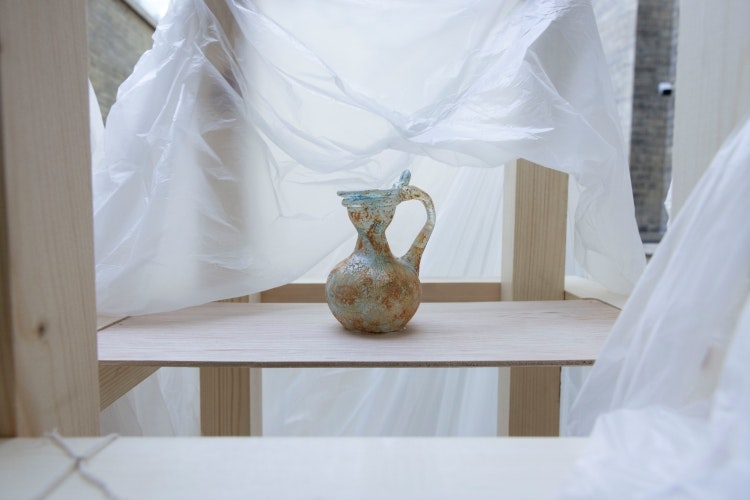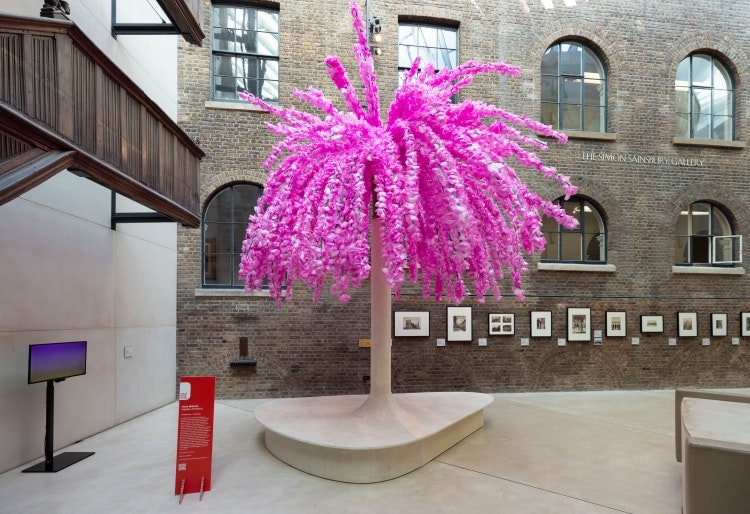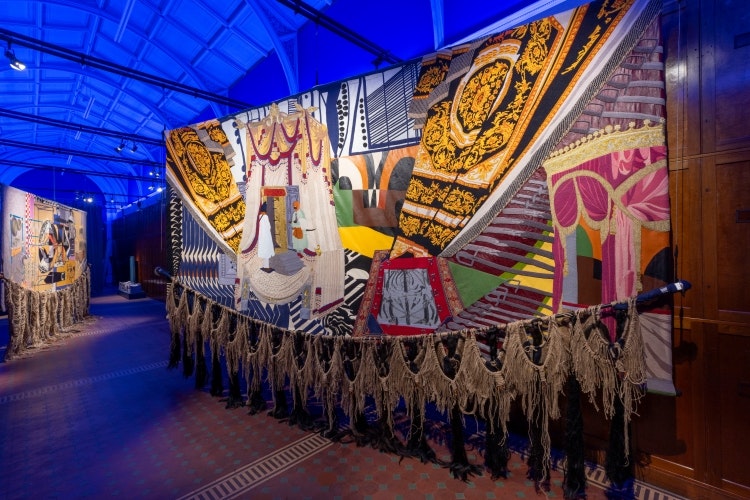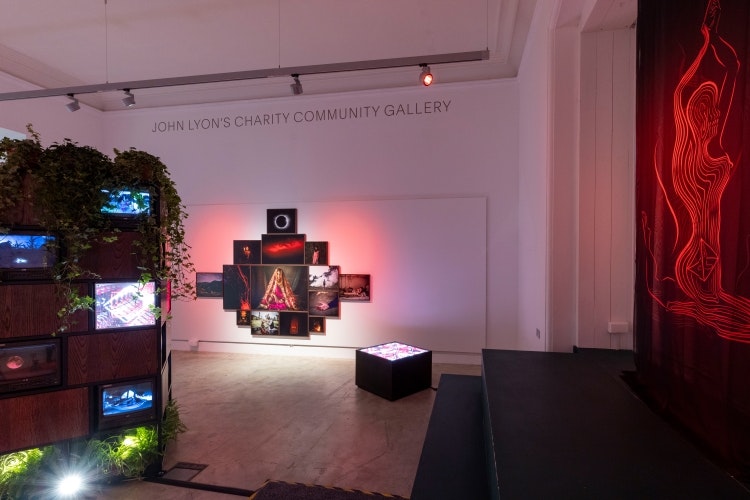Returning this year as the hub of London Design Festival, the V&A will house five installations that interpret themes of community and materiality.
This year, the V&A’s LDF commissions aim to celebrate design’s power to unite communities, while revealing untold stories and asking visitors to rethink our relationship with materials.
From car to coffee table

London based artist Andu Masebo believes that “no object has changed the modern world like the car”. He describes it as “a political item in the fabric of our society”, pointing out its links with “the rise of mass production, urban life and modernism”.
In the early days of its invention, a car was “closely connected with ideas of individuality and social status” but, while these connections still exist, cars are increasingly be talked about in relation to “environmental consciousness”, says Masebo.
In recognition of this, he has created an installation called Part Exchange that seeks to retell the life story of a scrapped Alfa Romeo Cloverleaf through a series of designed objects, inspired by its past owners over 25 years. The car parts have been disassembled and remade into domestic furnishings, from a daybed and freestanding shelves to a coffee table.
The installation can be found in the Design 1900–Now section across room 74, 74a and 76.
Reimagining history

Blown glass vessels from the V&A collection have been replicated by Palestinian architect, artist, and former V&A Jameel Fellow Dima Srouji in an installation titled But She Still Wears Kohl and Smells like Roses. Focusing only on objects from Greater Syria and Palestine region, the project looks to reframe the history of glass and the often-violent history of its excavation.
Srouji designed and made the replicas with the help of craftspeople working in Palestine today, including the Twam family, with the view of “imagining alternative histories of the objects, and how they may have come to the museum”, she says.
The objects, which are also accompanied by a film, include personal domestic items such as kohl make-up and perfumed oil vessels. As part of the display, the original objects will be temporarily removed from display and replaced with excavation or tomb cards, narrating the violent histories linked to their excavation.
Srouji’s work can be viewed in the Contemporary glass landing, Room 131.
Ritual celebrations

A huge seating installation called Hana Mikoshi now sits in The Simon Sainsbury Gallery at the V&A, designed to celebrate notions of ritual and intergenerational craft. London-based Hayatsu Architects collaborated with citizens of Gifu Prefecture in the centre of Japan’s main island, taking inspiration from the Mino Matsuri festival, which commemorates Japanese deities through dances, parades, processions and paper shrines.
The installation features 50,000 sakura, or cherry blossom, inspired washi paper flowers that were handmade by craftspeople in Japan and applied to the structure by visitors to the V&A throughout the summer.
Governor of the Gifu Prefecture Hajime Furuta revealed that the “Hana Mikoshi” festival has been running for over 170 years, explaining how each year, flower shrines made by the community are “paraded through the town, with bright pink cherry blossoms dancing wildly”. The Mino Washi (Japanese paper) used to make the flowers is a traditional craftwork from Gifu Prefecture and its history can be traced back 1,300 years, according to Furuta.
Exploring identity

British-born Canadian artist Nirbhai (Nep) Singh Sidhu and UK arts organisation Without Shape Without Form have co-designed Unstruck Melody, an installation comprising a large-scale tapestry, a sculpture, and a film in the V&A’s Prince Consort Gallery. The installation aims to foster moments of self-discovery through contemporary Sikh teachings while exploring their impact on contemporary design.
It is described by the designers as a “poetic and symbolically rich exploration of formlessness as a metaphor for the divine and endless possibilities”, as the display delves into the metaphysics of form and spatial rhythm. “In a world in which we create our identity around what we do as opposed to who we are, this installation explores a practice that promises to completely redefine what it means to be oneself,” says Without Shape Without Form artistic director and curator of Unstruck Melody Deep K Kailey.
Viewers can expect discussions around contemporary Sikh teachings, such as Simran which is a focused practice for the mind, Seva, a selfless service, and Sangat, a community practice and mutual commitment broadcasted through the specially commissioned film.
Empowering communities

In the John Lyon’s Community Gallery, an immersive installation and VR experience will follow the experiences of an ordinary 21st Century girl as she transforms into a superhero, whose powers derive from menstruation as she moves towards womanhood. Visual artist Poulomi Basu and film director and photographer CJ Clarke were inspired by Basu’s law changing impact art project Blood Speaks about menstrual exile and violence against women in South Asia.
Titled Maya: The Birth of a Superhero, the installation was designed to allow everyone to experience “what it means to face down your shame and monsters and have your inner strength awakened”, according to Basu and Clark.
This event is free and places are assigned on a first-come, first-served basis. The virtual reality headsets are designed for ages 13+.

- Design disciplines in this article
- Industries in this article







